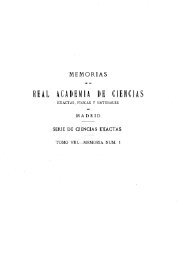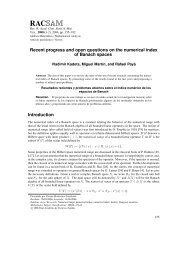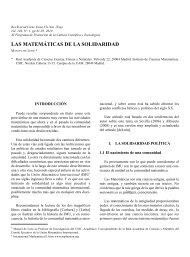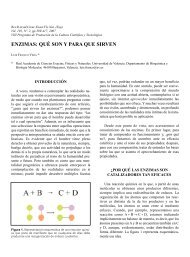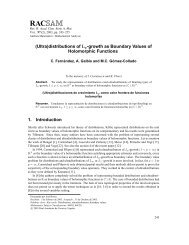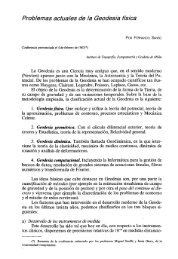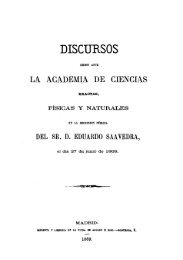The water footprint and virtual water exports of Spanish tomatoes
The water footprint and virtual water exports of Spanish tomatoes
The water footprint and virtual water exports of Spanish tomatoes
- No tags were found...
Create successful ePaper yourself
Turn your PDF publications into a flip-book with our unique Google optimized e-Paper software.
40 THE WATER FOOTPRINT OF TOMATO PRODUCTION6. CONCLUSION<strong>The</strong> total <strong>water</strong> <strong>footprint</strong> <strong>of</strong> 1 kilogram <strong>of</strong> tomato producedin Spain is about 236 litres per kilogram, ranging from 216to 301 litres per kilogram. <strong>The</strong> colours <strong>of</strong> the total average<strong>water</strong> <strong>footprint</strong> are as follows: 3% green, 36% blue <strong>and</strong> 58%grey. Still, these averages vary greatly depending on thecrop <strong>and</strong> <strong>water</strong> management systems, location <strong>and</strong> climate.Total largest <strong>footprint</strong>s (hm 3 ) correspond, logically, to thetwo main producing provinces; Badajoz <strong>and</strong> Almería. <strong>The</strong>yare well ahead <strong>of</strong> the rest <strong>of</strong> the provinces with an average<strong>of</strong> 215 <strong>and</strong> 182 hm 3 per year. In contrast, these twoprovinces show a high efficiency in terms <strong>of</strong> <strong>water</strong> use (l/kg),st<strong>and</strong>ing below the national average <strong>of</strong> 235 l/kg, with 201l/kg for Badajoz <strong>and</strong> 228 l/kg for Almería.<strong>The</strong> large differences <strong>of</strong> <strong>water</strong> <strong>footprint</strong>s across provinces,years <strong>and</strong> production systems, indicate the relevance <strong>of</strong> evaluationscarried out at the lowest possible scale. <strong>The</strong> nationalannual average <strong>water</strong> <strong>footprint</strong> in terms <strong>of</strong> l/kg for rainfed,open-air irrigated <strong>and</strong> greenhouse production systems was73, 331 <strong>and</strong> 74 l/kg respectively. Greenhouse production obtainsvery high yields that compensate their <strong>water</strong> use.<strong>The</strong> average <strong>water</strong> apparent productivity <strong>of</strong> tomato productionwas about 2, 3 <strong>and</strong> 8 €/m 3 for rainfed, open-air irrigated<strong>and</strong> greenhouse production systems respectively.We note also the important differences in the apparent <strong>water</strong>productivity throughout the year, which may be relatedto the much higher price <strong>of</strong> <strong>of</strong>f-season productions.Ground<strong>water</strong> production presented a higher blue <strong>water</strong> apparentproductivity than that <strong>of</strong> open-air irrigated production,around 7 €/m 3 compared to 3 €/m 3 . In any case, the studyin this field included only some provinces with specific <strong>and</strong>



